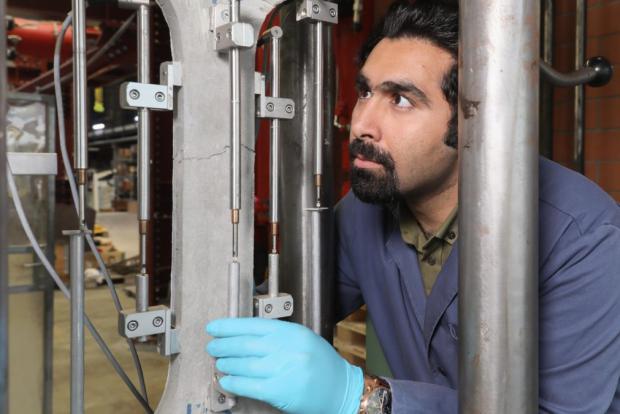
Breaking News
 James O'Keefe: My entire speech at AmericaFest 2025. We're not stopping. Join us to expose..
James O'Keefe: My entire speech at AmericaFest 2025. We're not stopping. Join us to expose..
 U.S. vs. Chinese Military Comparison – Focus on Asia-Taiwan Scenario
U.S. vs. Chinese Military Comparison – Focus on Asia-Taiwan Scenario
 DoJ Sues Four More States for Failing To Produce Voter-roll Data
DoJ Sues Four More States for Failing To Produce Voter-roll Data
 World's Largest Aviation Giant Abandons Google Over Security Concerns
World's Largest Aviation Giant Abandons Google Over Security Concerns
Top Tech News
 Perfect Aircrete, Kitchen Ingredients.
Perfect Aircrete, Kitchen Ingredients.
 Futuristic pixel-raising display lets you feel what's onscreen
Futuristic pixel-raising display lets you feel what's onscreen
 Cutting-Edge Facility Generates Pure Water and Hydrogen Fuel from Seawater for Mere Pennies
Cutting-Edge Facility Generates Pure Water and Hydrogen Fuel from Seawater for Mere Pennies
 This tiny dev board is packed with features for ambitious makers
This tiny dev board is packed with features for ambitious makers
 Scientists Discover Gel to Regrow Tooth Enamel
Scientists Discover Gel to Regrow Tooth Enamel
 Vitamin C and Dandelion Root Killing Cancer Cells -- as Former CDC Director Calls for COVID-19...
Vitamin C and Dandelion Root Killing Cancer Cells -- as Former CDC Director Calls for COVID-19...
 Galactic Brain: US firm plans space-based data centers, power grid to challenge China
Galactic Brain: US firm plans space-based data centers, power grid to challenge China
 A microbial cleanup for glyphosate just earned a patent. Here's why that matters
A microbial cleanup for glyphosate just earned a patent. Here's why that matters
 Japan Breaks Internet Speed Record with 5 Million Times Faster Data Transfer
Japan Breaks Internet Speed Record with 5 Million Times Faster Data Transfer
Next-gen reinforced concrete is said to be lighter and more eco-friendly

Now, scientists are claiming that a new type of fiber-reinforced concrete could soon serve as a lighter and greener alternative.
The experimental building material was developed by Amir Hajiesmaeili, a PhD student working in the Structural Maintenance and Safety Laboratory of Switzerland's EPFL research institute.
In place of the usual steel fibers, it incorporates fibers made of a very stiff type of polyethylene. These not only provide the same amount of structural support as steel fibers, but they also adhere very well to the cement. As a result, approximately half as much cement is required, with readily-available limestone making up the difference.
This is quite noteworthy, as the production of traditional Portland cement is a major source of greenhouse gas emissions. In fact, Hajiesmaeili claims that the manufacturing of his ultra high-performance fiber-reinforced concrete (UHPFRC) releases 60 to 70 percent less CO2 than that of regular steel-fiber equivalents. And as an added bonus, the material is also reportedly 10 percent lighter.

 Advanced Propulsion Resources Part 1 of 2
Advanced Propulsion Resources Part 1 of 2

